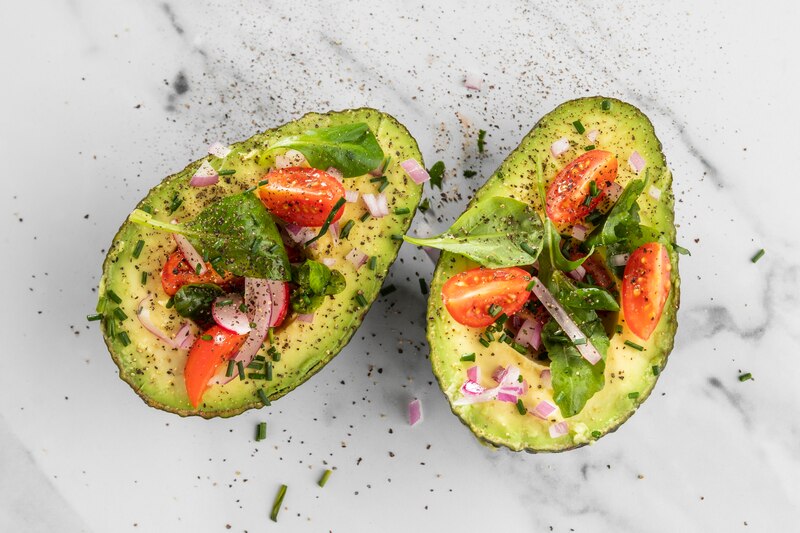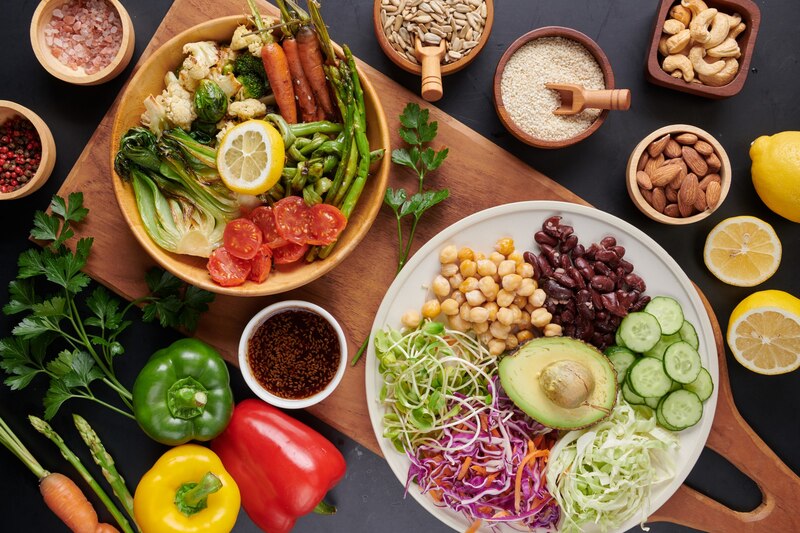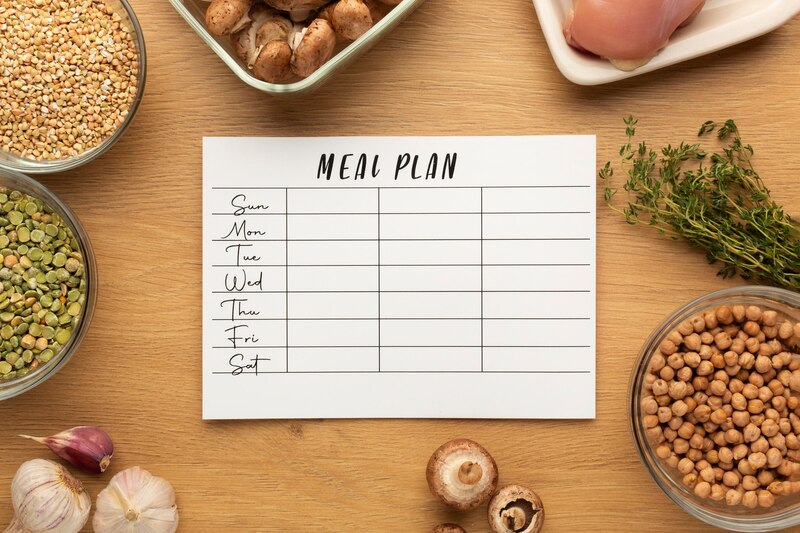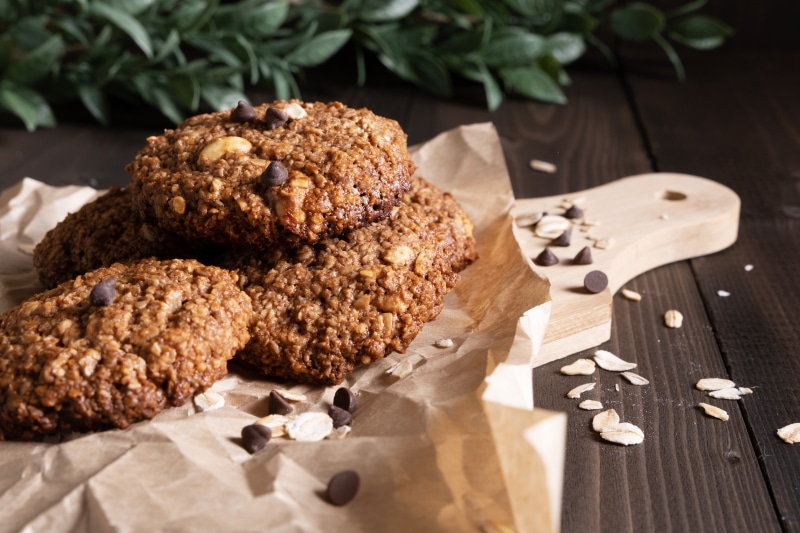Meal preparation can be the deciding factor between successful eating, enjoying healthy and nourishing foods, and opting for ready-made or takeout meals that are rich in fat, sugars, and salts. I am a huge proponent of meal planning because, as a full-time career, in addition to operating my own business and attempting to maintain my own health, planning makes my life easier by allowing me to shop for and organize my meals in advance, and prepare with the items I already have on hand (reducing food waste). It also prevents me from making a mad run to the shops, where I might be tempted to waste money (depending on how hungry I am at the time of shopping) by the abundance of tasty treats surrounding me.

How much effort is required? When planning home-cooked meals for yourself and your family, you should first determine the amount of time you are willing to spend in the kitchen. If you have been the type of cook who relies on ready-made meals or sauces from a jar or packet, examine how much additional time it may take to cook from scratch, combining entire ingredients, controlling what you put into your dishes, and using only items you enjoy!
When you become accustomed to planning, shopping, preparing, and cooking, you will realize that it was not as tough as you may have initially believed. Additionally, you can save time, energy, and money by cooking in bulk for future meals!

Make a list Begin by planning your weekly menu for a few minutes. Record what you intend to prepare for each meal. Keep the food simple initially, especially. Introduce diversity by selecting different fruits and veggies, herbs and spices, so that your meals remain fascinating, pleasant, and nutritious while allowing you to consume your daily five to ten portions of fresh fruit and vegetables. Then, create a shopping list of the ingredients you will need to purchase at the grocery store. A list will help you save time and money.
Breakfast There is a fantastic proverb that states, “Eat breakfast like a king, lunch like a prince, and dinner like a poor” Typically, I reserve my last meal of the day for something light, such as a salad, soup, or fruit, in order to keep my body light as it begins to relax and is limited in its ability to move.
Traditionally, morning dishes consist mostly of toast or bread, cereals, pancakes, etc. All of these are carbohydrate-based, which is good, but you should consider adding protein, fruit, and/or veggies to make the meal “full” and balanced! An excellent example is preparing porridge oats with half water and half plant-based milk (to provide a little smoothness to the meal) and topping it with fresh fruits and a teaspoon of your favorite nut butter or toasted seeds for crunch (and plant-based protein)!
This is both nutritious and healthy, as it contains carbohydrates, lipids, proteins, vitamins, and antioxidants. As an alternative to a cooked meal, toast your favorite bread (whole-grain, sourdough) and top it with tofu scramble and half an avocado. Make a smoothie using fresh fruit and/or vegetables, green leaves (spinach, celery, kale), and some sort of protein (plant-based protein powder, almonds, nut butter, seeds, avocado) combined with water or plant-based milk for a non-cooked meal that can be enjoyed on the move.
A nice lunch can be a rushed event, especially if you are working at a desk (home or office) and in an office! It is essential to take a break, step away from ‘doing,’ and spend at least thirty minutes attentively chewing and digesting a nutritious lunch.
Soups (especially during the winter months) are a fantastic alternative for lunch since they can be cooked fast and fresh, employing a large portion of your daily vegetable limit (therefore decreasing food waste) and fresh herbs and spices to give it flavor. This can be followed with a jacket potato stuffed with delectable ingredients. By baking a sweet potato, additional nutrients will be added that your body will appreciate. Consider creating a bean chilli as your filling; when made in a large amount, you can store it for another supper during the same week or freeze it for use at a later date, saving you time in the future.
Again, whole grain breads and nutritious ingredients such as houmous, roasted veggies, avocado, and fresh salad/spinach leaves are recommended for sandwiches.
As lunch will be your second main meal of the day, you may begin preparing delectable pies and bakes, which, like the chili, can be enjoyed fresh on the day and then refrigerated or stored for later consumption. Some alternatives are: vegan shepherd’s pie, vegetarian pasta bake, lasagna. You can also become more experimental when preparing stews and curries.
Dinner Depending on the time you eat dinner and your plans for the evening, it is ideal to eat a light meal in the evening, as we are beginning to wind down for the day with less activity. Obviously, this depends on your lifestyle and other considerations (such as if you are eating out, entertaining family, friends, or clients, etc.), so use your own discretion regarding how and when you consume your main meal.
Keep it simple Keeping your meals basic will make it much simpler for you to maintain proper meal planning. Stick to oatmeal for breakfast, substantial soups or salads for lunch, and a stew with a salad or vegetable side dish for dinner. When the following conditions are met, you can begin cooking in bulk:
a) Have mastered meal planning and feel at ease and confident in the kitchen.
c) Have more time.
c) Have greater energy.
d) The need to accommodate a variety of diets and tastes.
f) Desire to amuse others!
Think:
• Pasta topped with a sauce (mushroom Bolognese).
• Rice smothered in sauce (curries, stews).
• Soup and nutritious bread
• Salads made with grains (rice, pasta, quinoa) with seasonal fruits and vegetables.
Make quantities If you are cooking for one or two people, batch-cook recipe serving sizes may give you concern. However, we recommend that you still create at least the full number asked for by a meal plan and refrigerate or freeze the leftover parts (batch cooking for future meals). This will save you time in the future and allow you to find something delicious for a future supper. Most of our recipes can be frozen.
Shopping habits
supermarkets and organic food retailers With the menu plan for the week in hand, begin shopping at the local grocery. Choose a store that carries both fresh produce and alternative items (wholefoods, healthy foods, supplements, world foods etc). In addition to shopping at the supermarket, you should begin investigating more independent stores, as they tend to have more “different” things that cannot be found in your typical supermarkets. Also, wherever feasible, purchase your fresh, sustainable fruits and veggies from local markets and farms, which offer a greater variety and level of freshness than most stores.
Reading labels The secret to effective shopping is reading labels carefully. Ingredients should be mentioned in descending order of quantity on the label. With the current food labels, manufacturers can deceive you. Occasionally, simple sugars such as sucrose, corn syrup, fructose, and fruit concentrate might be mentioned individually to remove “sugar” as the first component. Manufacturers have discovered ways to conceal lipids in ingredient lists by labeling them as “monoglycerides” and “diglycerides.” You may recognize “triglyceride” as a complex lipid, but you are likely to ignore “mono-” and “di-” versions as additives unrelated to fats.
When you purchase fresh and whole ingredients, you will purchase fewer jars and packets of food, thus you will be exposed to fewer ingredients whose names you cannot pronounce. Remember that the fewer components a product contains, the better, and if you can prepare or bake a food or dish, do so! It will serve you and your health for a longer period of time and boost your general energy and wellness.
Benefits at a glance
• Reduce food waste by consuming goods that are already in your refrigerator, freezer, or pantry.
• Know what and when you are eating.
• Manage what you eat by selecting ingredients that are beneficial to your health and that you enjoy.
• Conserve time, energy, and funds.








